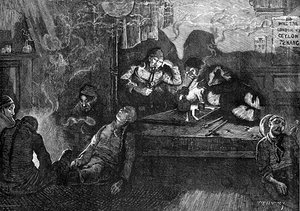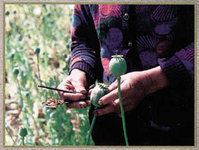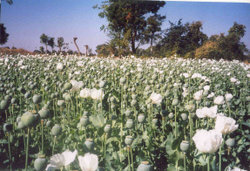The Laotian Government's headlong rush towards their 2005 UN deadline for total opium eradication has been hailed by international drug control agencies as a remarkable success. The United Nations Office on Drugs and Crime (UNODC) said in July that the achievement in Laos, together with a parallel decline in opium cultivation in Burma, could potentially lead to the end of more than a century of opium production in the so-called Golden Triangle region if it can be sustained.
But there is mounting evidence of the drug war's forgotten casualties. More and more Hmong and Akha hill people are dying--not because of any insurgency or displacement caused by a war--but rather because of an overzealous implementation of the global anti-narcotics campaign.
With few alternative income-streams in place, development specialists have warned of a looming humanitarian disaster for those who have been cajoled and coerced into abandoning their traditional opium livelihoods. More than 30,000 have been uprooted from their traditional homes and mountain habitats and resettled in the valleys. Crop substitution and aid is available to only a few areas.
[ILLUSTRATION OMITTED]
A number of Laos-based development specialists argue that the UN agency should have checked first about the number of alternative crop projects in place, before urging the Government to destroy the hill peoples' only livelihood. According to one NGO survey of resettlement areas, all age-groups are dying of malaria and dysentery. Poor sanitation and lack of medicine have led to soaring mortality rates; at four per cent, twice that of hill farmers in their former mountain habitat and almost four times the national average. A separate UN report observes that resettled hill people 'not only lack sufficient rice, but face fresh diseases--malaria, gastro-intestinal problems and parasites,' which are seldom experienced in the mountains.
It was not always so. Until the late 1990s the Laotian Government, mindful that more than 40 per cent of its population was made up of hill peoples and that opium was an important cash crop and medicine, displayed a sensible reluctance to ban opium poppy cultivation until the international community could guarantee alternative crops and livelihoods were in place. However, in 1998 both UNODC and the US Drug Enforcement Administration succeeded in pushing UN member states to accept deadlines for ridding the world of the narcotics supply. Laos was pressured to fall into line and drop all its caveats--with clearly disastrous results.
Meanwhile, some opium-growing nations are exempt from narcotics repression. Australia, France, India, Spain and Turkey are all members of a licit opium-growing club of nations based on pharmaceutical demand for opium derivatives in the manufacture of pain-killing drugs. A number of Lao government officials query why their poor poppy farmers cannot be offered the same deal as that of Tasmanian farmers, where opium worth more than $49 million annually is legally harvested for pharmaceutical purposes.
Given that Laos' contribution to the international heroin market is marginal, and narcotics agencies accept that around 40 per cent is consumed domestically, what is left of current opium production could readily be absorbed by the pharmaceutical demand.
But given the strong mindset of those waging the global war on drugs against legalization, even for medicinal purposes, this alternative approach faces real obstacles.
COPYRIGHT 2004 New Internationalist Magazine
COPYRIGHT 2004 Gale Group




